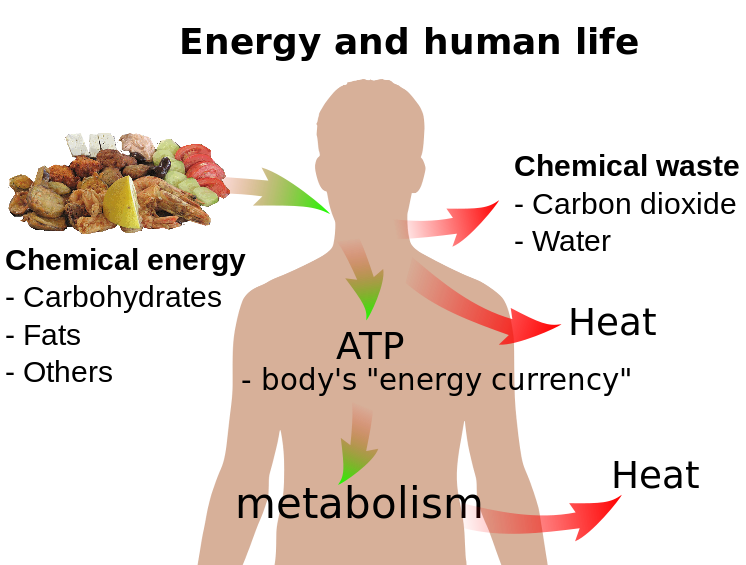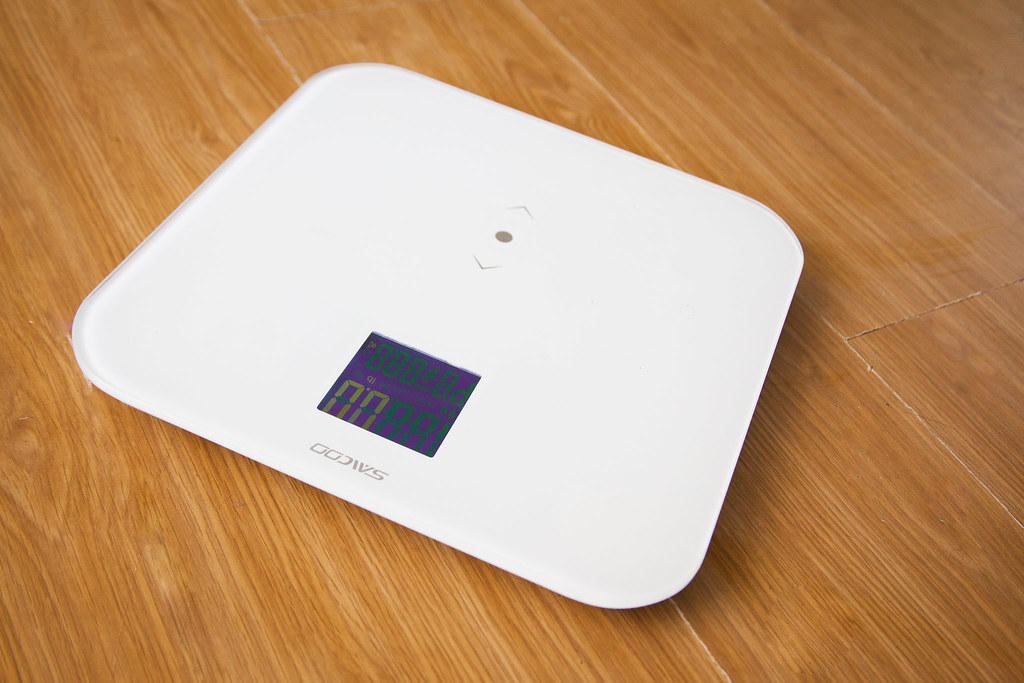|
So what forms the basis - what are the necessary conditions for us to lose fat? To lose fat you must create a calorie deficit. Simply put, a calorie deficit refers to consuming less energy (i.e. food) than your body requires or expends in a given period of time (typically measured within a 24 hour period). Now, the common MISTAKE made by dieters and CICO “deniers” is assuming that CALORIES IN literally refers only to the total (known) numerical value of calories eaten/drank and that CALORIES OUT literally refers only to calories “burned” through exercise - and for some slightly more acquainted with bioenergetics, resting metabolic rate.
CALORIES IN Calories-In is relatively simple: it’s the food you digest. However, the calorie content of food is imperfectly determined and calorie availability can vary between species/variety/source and even due to the degree of processing involved. These are small inconsistencies, but inconsistencies nonetheless. For example, dietary fiber cannot be digested through typical enzymatic action in our small intestine (we do not produce cellulase). So even though fiber HAS calories, it doesn't mean we "absorb" those calories. However, gut flora in our large intestine can - through fermentation - convert fiber into short-chain fatty acids. Those SCFA can translocate from the intestinal lumen into circulation, yielding calories. Thus, the composition of your gut flora influences your CALORIES IN, and that composition differs between people, and across your lifespan. CALORIES OUT This gets more complicated. CALORIES OUT is not simply represented by what the treadmill tells you. You inhabit a living body that, whether you are conscious of the fact or not, is perpetually dependent on energy availability. In short, CALORIES OUT may be summed up as:
IMPORTANT CAVEATS:
So was this client actually in a caloric deficit when she came to me? According to the equation, yes - according to real-life, NO! By definition, because she was not losing weight she was NOT in a caloric deficit. It's important to remember that equations are crude estimations of calorie needs, and just exactly how efficiently individuals digest and utilize/partition the food molecules they eat is unique to them. Activities like resistance training stimulate muscle protein synthesis (MPS) to a large enough degree that we can actually see its effect in 1-2 months - which is pretty amazing to think about! The food you eat literally forms the essential elements of contractile muscle! Because we created a demand for protein and energy (in the molecular form of ATP), we robbed her adipose (fat cells) to maintain, build, and repair actively trained muscles. Training created the deficit, but it also told her body what to do with her food: Burn the Fat, Feed the Muscle!
0 Comments
If you are human and live somewhere on the blue planet, you have at some point been either interested in losing fat, gaining muscle, or both. Both of these contribute to your total body-weight, and most people tend to assume that when their weight changes they are either losing or gaining fat, or losing or gaining muscle. Is this factually accurate?
The truth is, most of the fluctuations in your bodyweight, at least in the short term (day to day; week to week), are a result of fluid dynamics. Your body is 65-90% water depending on your body composition, and as such where that water goes can really affect your bodyweight! You’ve probably noticed that if you weigh yourself before bed, then again in the morning, you will typically weigh in excess of a pound less after a night of sleep. Is this because you were a fat burning machine while sleeping? Not likely… Your body is an incredible factory that runs all day, and all night. Do you burn energy while sleeping? Not a lot, but yes you do - and the byproducts of cellular respiration include carbon dioxide (exhaled), and H2O. H2O (water) is a molecule that is used for numerous chemical reactions in the body. “Dehydration” reactions occur when two molecules form in the body, and H2O is released as a byproduct. Where does that water go? Well, quite a bit of water escapes your body during the night through exhalation, and evaporation as part of the natural process of body temperature regulation. Yes, it’s true, you can lose several pounds of water overnight, especially the larger or more metabolically active you are. Sometimes you “retain” water in the intracellular space, or even in the bowel. This can certainly add to your normal bodyweight. If you are particularly active, especially in endurance sports or if you perform intense exercise at least 1 hour in length, you can deplete your muscle tissue of a macromolecule called Glycogen. Glycogen is basically stored complex sugars in the muscle tissue that is used to fuel that muscle’s activity. The average amount of whole-body glycogen is 300-400g (for women and men respectively), with some people having as much as 1kg. As much as 65% of glycogen is water, so when you exercise and use up glycogen, you are actually dehydrating. Even higher levels of whole-body glycogen are possible by following a carb-depletion and carb-loading protocol. This possible consequence being that the more fit your are, the more glycogen/weight you can store. This may be partially why weight-loss can slow as a training regimen progresses, as you may be getting better at storing glycogen. Then again, if training frequently but without eating 300-400g of carbohydrate per day to reload glycogen stores, this is not likely the case. Here's where you really see these fluid dynamics at work: fasting, and low-carb diets. Now to be clear, if you start any diet that creates a calorie deficit (whether explicitly stated or disguised as magic) you will typically begin to lose muscle glycogen if the deficit is large enough (and remember a deficit is the negative balance between energy required and energy spent - in other words a combination of diet induced and activity induced deficit). So in the honeymoon phase of any diet (first month) you could reasonably expect up to 10lbs or more of weight loss. That sounds pretty great right?! Sure it is! And the amazing thing is that pretty well any diet can do that in month one. But unfortunately that's the easy weight loss - the low hanging fruit as we sometimes call it. After that initial loss, reality sets in and true rate of fat loss is revealed as something closer to 0.5% - 1% of your bodyweight per week (e.g. 0.5%-1% x 140lb female = 0.7lbs - 1.4lbs per week). That's only 2.8lbs - 5.6lbs per month. Now let's be clear - 5.6lbs loss in a month for a 140lb female is awesome! For larger individuals their weight-loss will be greater (because they have a higher proportion of adipose tissue (fat mass) to lose, and for smaller, leaner individuals that weight loss will be on the lower side. More aggressive weight-loss efforts like crash diets, tea "detoxes", and other get-thin-quick schemes can result in much faster weight-loss. Unfortunately, the faster the weight-loss the higher the proportion of lean mass that makes up that weight (especially in the absence of resistance training). This is problematic because even though total body-weight decreases (for a time) body-fat percentage remains unchanged, or perhaps worsens if this cycle is repeated. The challenge that the average dieter faces after month one is that not only does weight loss slow, thus necessitating a greater deficit, but it can stall and perhaps even increase as a consequence of the fluid dynamics we just discussed. After a month of "clean eating" (i.e. low-sodium, low-carb, and high-protein - makes you urinate more) you are typically glycogen and water depleted. If you have a cheat day or meal, or perhaps have a moment of weakness and scarf down a bag of Doritos for example, you start to drive carbohydrates into your muscle, along with it's associated water component, and the extra sodium will drive water into your extracellular space and lower bowel. This sudden influx can really be seen on the scale, and have a negative effect on your mental fortitude. Frankly, it can be pretty defeating, and unsurprisingly this is where most people fall of the wagon. It is unfortunate because this is where a nutrition coach is worth their weight in gold (OK, perhaps not gold but maybe protein powder?). Not only is a qualified coach educated in the science of weight loss, but many are uniquely equipped to identify and address the mental struggle with weight loss, and work with clients to create practical strategies for staying on track, staying focused, and breaking through barriers. Coach Solly is a Precision Nutrition Certified Level 1 coach who sees nutrition and weight-loss from dual perspectives: not only has he lost 60lbs and kept it off for 15 years, but he has also coached athletes to Pro level physique status, in addition to stepping on a bodybuilding stage himself. |
NANAIMO'S BEST kettlebell group, strength & fitness classes | (250) 713-1262
CategOries
All
Archives
February 2024
|
Get Social! |
Closer Than You Think!11 Giggleswick Pl
Nanaimo, BC V9S 2V7 |



 RSS Feed
RSS Feed
